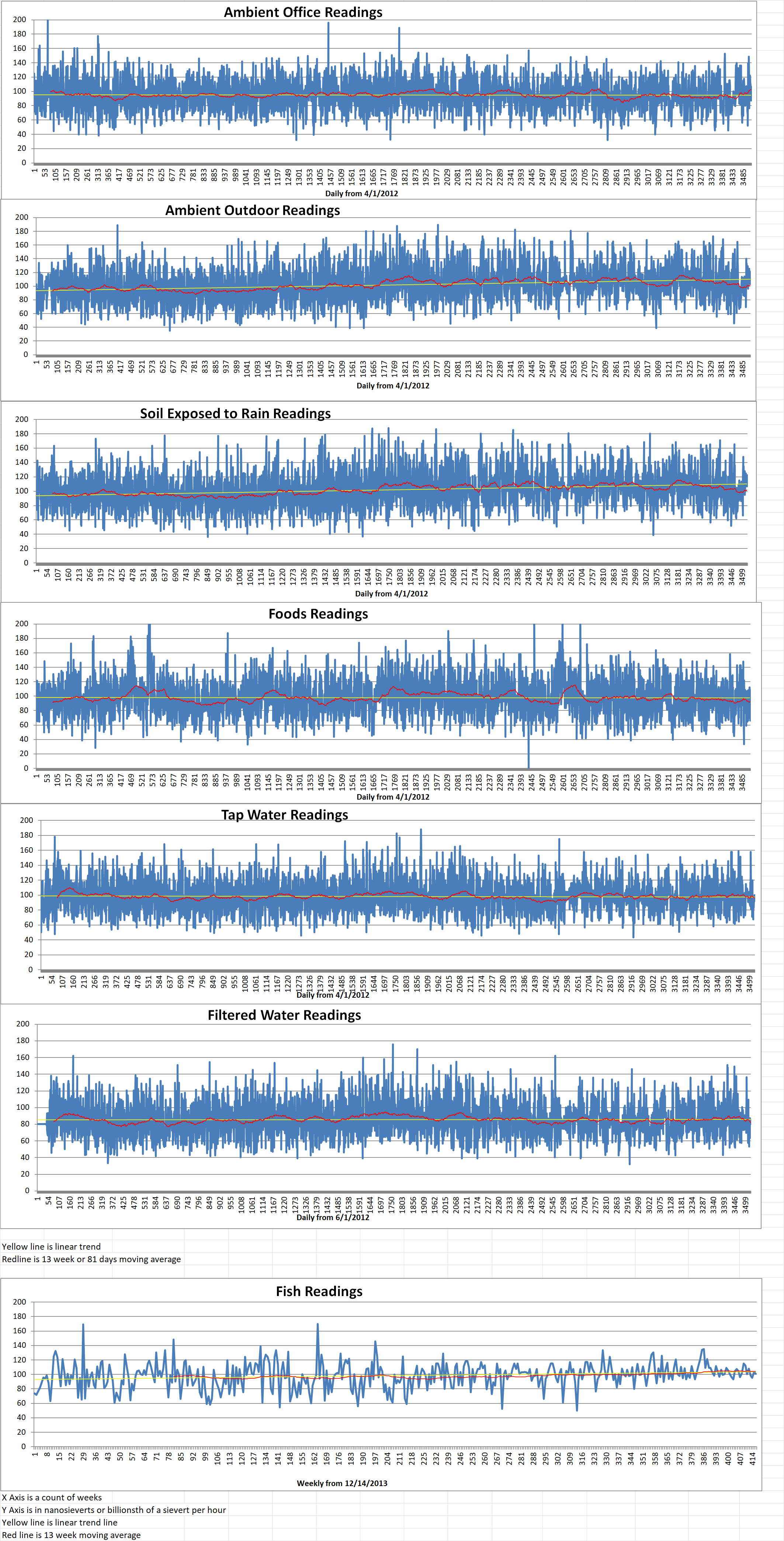Part 2 of 3 Parts (Please read Part 1 first)
(Continuing comments of U.K. members of Parliament in the House of Lords as they debate the Nuclear Energy Financing Bill.)
Lord Rooker is a member of the opposition Labour Party of the U.K. Parliament. He said that he supported the financing bill. He added that “I do not think you can be taken seriously as a political party in 2022 if you are not in favour of civil nuclear power: it is as simple as that.”
Lord Teverson is a member of the Liberal Democrats which is the fourth largest party in the House of Common. He opposed the bill, saying that he was skeptical about the need for new nuclear development, citing nuclear waste and costs. He also said that if he was in favor of nuclear power he would advise the U.K. government to “go down the Korean route: you build a fleet of 20, you get your economies of scale and you finance it through the public purse which has minimum interest cost … probably the only way you can make nuclear power successful in the modern world.”
Baroness Neville-Jones is a Conservative member of Parliament who was a former Conservative minister of security. She said, “We need to get it on the statute book as soon as we can, with early commencement, so that the detailed work on financial flows via the RAB model can go ahead, with some prospect of Sizewell and other possible nuclear sites coming on stream in a reasonable timescale. The truth is that this country is not going to achieve its statutorily embedded climate change goals of net-zero by 2050, nor the decarbonization of electricity production by 2035, without a contribution from nuclear energy generation, which, as has also been said, is at the moment declining. I know there is a big divide on this issue, but it is not just the government who say we need it; so does the Climate Change Committee. We need the contribution of nuclear-generated power. Frankly, Parliament cannot deny the means to the end that it has ordained.”
Lord Ravensdale is an independent member of the House of Lords. He is an engineer and project director of the nuclear industry. He said that the bill should include provisions to make hydrogen produced from a nuclear energy eligible for the renewable transport fuel obligation along with wind and solar. He added that “A simple change, adding nuclear-derived hydrogen to the list of zero-emissions sources defined by the Energy Act 2004, could unlock millions of pounds of private investment into hydrogen production in the UK and accelerate the Government’s hydrogen production targets, while also supporting the nuclear.”
Baroness Bennett is a member of the Green Party. She restated her party’s long-term opposition to new nuclear power. She added that nuclear power was “crowding out other opportunities and ways of dealing with our climate emergency and poverty crisis.” She gave examples such as renewables and energy efficiency.
Please read Part 3 next.
Blog
-

Nuclear Reactors 1005 – U.K. Parliament Considering New Funding Approach For Nuclear Builds – Part 2 of 3 Parts
-
Nuclear News Roundup Feb 24, 2022
KNF obtains license for fuel transport container world-nuclear-news.org
Local legislators support Diablo Canyon world-nuclear-news.org
UAE’s nuclear regulator expects to issue operating license for third reactor in 2022 spglobal.com
Big Rock Nuclear Plant Getting New Owners 9and10news.com
-

Geiger Readings for Feb 24, 2022
Ambient office = 89 nanosieverts per hour
Ambient outside = 86 nanosieverts per hour
Soil exposed to rain water = 89 nanosieverts per hour
Zuccini from Central Market = 121 nanosieverts per hour
Tap water = 96 nanosieverts per hour
Filter water = 81 nanosieverts per hour
-

Nuclear Reactors 1004 – U.K. Parliament Considering New Funding Approach For Nuclear Builds – Part 1 of 3 Parts
Part 1 of 3 Parts
Members of the U.K. House of Commons gave their approval last month for a new approach to funding new nuclear projects. The new method is called a regulated asset base (RAB) funding model. The U.K. government believes that the new approach will lower the cost of financing and means investors share some of the project’s risks with consumers. The bill also seeks to remove barriers to private investment. Pension funds are one possible source. They seek to “reduce the UK’s reliance on overseas developers for finance.” The members of the U.K. Parliament’s second chamber, the House of Lords, are now debating the Nuclear Energy (Financing) Bill.
Lord Callanan is a business and energy minister for the governing Conservative Party. He said, “This legislation is vital in getting new nuclear projects off the ground and will help the UK meet its decarbonization targets. With all but one of the UK’s current nuclear reactors scheduled to close by 2028, representing 85% of our existing nuclear capacity, the need for new nuclear projects is more urgent than ever.”
The U.K. government intends to bring at least one large-scale nuclear project to a final investment decision by the end of this Parliamentary session by the end of 2024. They have also been supporting the development work for small modular reactors (SMRs).
Callanan also said that by bringing in private investors, the U.K. would be able to “widen the pool of available finance for new projects”. He went on to say that it would “take us away from reliance on single developers financing new projects at their own risk, something which has contributed to the cancellation of recent projects at Wylfa and Moorside. Nuclear power will need to play a significant role in the UK’s future energy mix to ensure reliable, low-cost, low-carbon power as we transition towards net zero”.
The current mechanism to support new nuclear projects is called the Contract for Difference (CfD) scheme. Developers have to finance the construction of a nuclear project and they only begin receiving revenue when the power plant starts generating electricity.
This CfD approach was used to finance Hinkley Point C. The developers agreed to pay the entire cost of constructing the two new reactors at the Hinkley nuclear power plant. In return for covering the cost of construction, they will be able to sell electricity for an agreed fixed price once the reactors come online.
This approach places the entire construction cost risk on developers. It has led to the cancellation of other potential new nuclear build projects such as Hitachi’s project at Wylfa Newydd in Wales and Toshiba’s project at Moorside in Cumbria.
Under the RAB approach to financing, a company receives a license from an economic regulator to charge a regulated price to customers in exchange for providing the new infrastructure. More recently, the RAB model was used to successfully finance the construction and operation of the Thames Tideway Tunnel and Heathrow’s Terminal 5.
Please read Part 2 next. -
Nuclear News Roundup Feb 23, 2022
Question Of Dumping Nuclear Wastewater Into Bay Will Be On Sandwich Ballot capenews.net
BWXT Awarded $1 Billion in Naval Nuclear Propulsion Program Options businesswire.com
Genocide and nuclear bombs: Putin’s unfounded claims decanherald.com
‘He threatened nuclear extinction’: Trump and Pompeo pummeled by Morning Joe for Putin praise rawstory.com
-

Geiger Readings for Feb 23, 2022
Ambient office = 88 nanosieverts per hour
Ambient outside = 81 nanosieverts per hour
Soil exposed to rain water = 79 nanosieverts per hour
Tomato from Central Market = 86 nanosieverts per hour
Tap water = 76 nanosieverts per hour
Filter water = 69 nanosieverts per hour
-

Nulcear Fusion 168 – ITER Delayed Because Of Damaged Parts – Part 2 of 2 Parts
Part 2 of 2 Parts (Please read Part 1 first)
On January 5th, 2022, there was a meeting between the ITER organization, ASN, and another French nuclear regulator called Institut de Radioprotection et de Sûreté Nucléaire (IRSN) in an attempt to resolve the impassed being caused by the damaged sections.
Michel Claessens is a former spokesperson for the ITER organization who still maintains contacts with people inside the organization. He said, “During a special meeting of the steering committee with ASN, IRSN, and the ITER organization on Jan. 5, 2022, ASN announced that the reactor assembly is not authorized, which means, in practice, a shutdown of the project.” ASN told the ITER organization that they were not satisfied with other aspects of the current reactor design because the present excessive risks of ionizing radiation exposure for workers.
Bernard Doroszczuk is the chairman of the board of ASN. On January 25th, 2022, he sent a letter to Bernard Bigot who is the director-general of the ITER organization. He told Bigot that Bigot is not authorized to lower the two sections into the reactor chamber unless the ITER organization can guarantee that the installed sections can later be separated and removed. He added that “Consequently, the assembly of the tokamak cannot be authorized. The welding of these sections inside the tokamak pit would represent an irreversible operation. This would require ASN’s formal approval before it can take place.”
These are excerpts from Doroszczuk’s letter to Bigot:
“As is evident from the in-depth examination of your file and the many technical exchanges held between your teams and the ASN departments as well as the IRSN experts, the following elements apply:
– The “neutron budget” values that you anticipate during the operation of the installation are greater than the maximum neutron fluence to be taken into account for the dimensioning of installation.
– The elements received concerning the radiological maps do not make it possible to demonstrate that the limitation of exposure to ionizing radiation is controlled, a major challenge for an installation of nuclear fusion.
– In particular, the progressive activation of materials under the effect of intense neutron flux is not properly taken into account, and the exposure of workers in adjoining premises to nuclear buildings should be assessed with realistic conservative assumptions.
Given the elements noted above, ASN considers that this condition is not satisfied at this stage. Thus, the hold point related to the tokamak assembly cannot be lifted before February 1, 2022. Consequently, the assembly of the tokamak is suspended. In the immediate future, I urge you not to take any action that is difficult to reverse concerning the sectors of the vacuum chamber affected by dimensional non-conformities, so as not to impede your capacity to carry out the repairs that would be deemed useful with a view to their welding.
I invite you to make sure that you have a stabilized design of all the equipment associated with the vacuum chamber, the overall consistency of your sizing, with regard to all the requirements that you had set yourselves regarding the protection of workers, the public, and the environment, and the proper accounting of deviations and defects already noted during construction. An in-depth design review needs to be carried out before you again seek authorization to start assembling the tokamak equipment inside the cryostat.” -
Nuclear News Roundup Feb 22, 2022
South Koreans overwhelmingly want nuclear weapons to confront China and North Korea, poll finds washingtonpost.com
Slovak agreement reached on measures to limit energy bills world-nuclear-news.org
Pueblo County drops support for nuclear power after facing backlash from residents cpr.org
Finland says Russian action in Ukraine could affect joint nuclear project reuters.com
-

Geiger Readings for Feb 22, 2022
Ambient office = 106 nanosieverts per hour
Ambient outside = 121 nanosieverts per hour
Soil exposed to rain water = 22 nanosieverts per hour
Romaine lettuce from Central Market = 66 nanosieverts per hour
Tap water = 92 nanosieverts per hour
Filter water = 80 nanosieverts per hour
-

Nulcear Fusion 167 – ITER Delayed Because Of Damaged Parts – Part 1 of 2 Parts
Part 1 of 2 Parts
The International Thermonuclear Experimental Reactor (ITER) is a huge international project to construct a prototype tokamak nuclear fusion reactor. A group of countries are providing technology and expertise to construct what has been called the biggest and most complex international science experiment in history. ITER began construction of infrastructure in Cadarache, France in 2013. The construction of the actual tokamak began in 2020. ITER was supposed to go into operation in 2025. The current estimated date of initial operation of the ITER is now 2035. It is just intended to demonstration stable fusion and will not generate any electricity.
The original budget for ITER was estimated at just under seven billion dollars. The current estimate is around twenty-three billion dollars. Some estimates are as high as sixty five billion dollars but that is strongly disputed by the ITER administrators.
The reactor core will be assembled from nine huge vacuum vessel sections which each weight four hundred and forty tons of steel. Two vacuum vessel sections have been delivered to the site. The first section was scheduled to be lowered into the tokamak chamber, also known as the tokamak pit in December of 2021.
The ASN learned about damage to the delivered sections during an inspection on July 2nd, 2021 and reported it to Bernard Bigot, the director-general of the ITER organization on July 20th, 2021. Since then, the ITER organization has submitted repeated requests to the ASN to allow the ITER organization to proceed with the installation of the damaged sections with an alternative method.
In November of 2021, it was reported in the press that both of the vacuum vessel sections that had been delivered the ITER site were damaged during manufacture. The details of the damage are unclear. Either the sections or parts of the sections fell at the manufacturing site. This caused dimension distortion according to the French nuclear safety authority Autorité de Sûreté Nucléaire (ASN).
As a result of the dimensional distortions of the vacuum vessel sections, the subassembly of these section cannot be carried out as planned in the spacious assembly hall. Instead, it has been proposed that the subassembly of the damaged sections be performed inside the confined space where the final assembly of the reactor core will take place.
If the damaged sections cannot be welded together correctly, the reactor could release excessive radiation during operation. Gamma-ray radiation and neutrons that will be released during the operation of ITER will require proper cojoining of the nine vacuum vessel to protect workers near the reactor.
Evangelia Petit is the press officer for the ASN. She has explained that the ASN is not willing to compromise its safety standards. “The specifications provided are not sufficient to demonstrate and guarantee compliance with the requirements, specifically concerning a) radiological protection material and [its] impact on the total weight of the tokamak and b) welding and related controls of the vacuum vessel sectors, given the existence of dimensional non-conformance. In order to go forward, we have requested IO to provide us with a consolidated design, carefully reviewed in order to check [compliance with] all safety and radiological protection criteria.”
Please read Part 2 next
